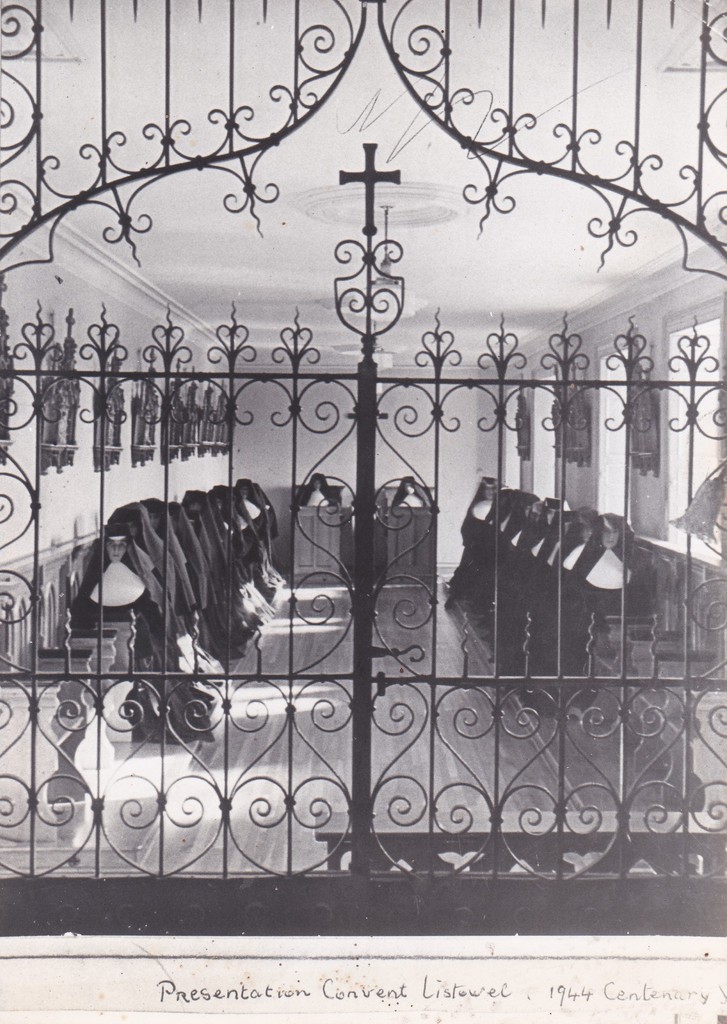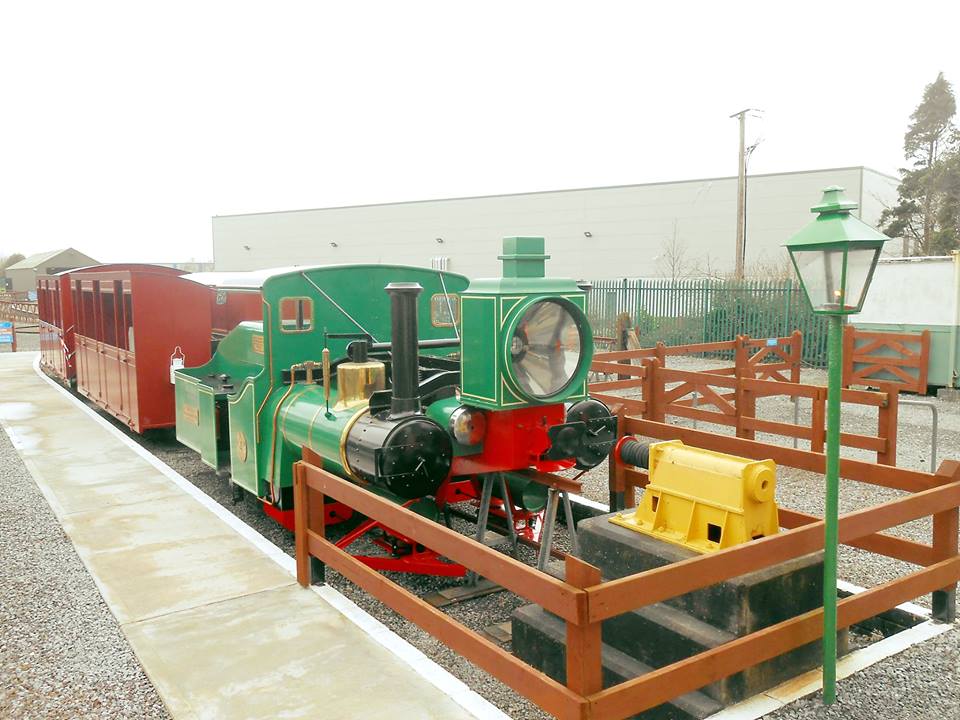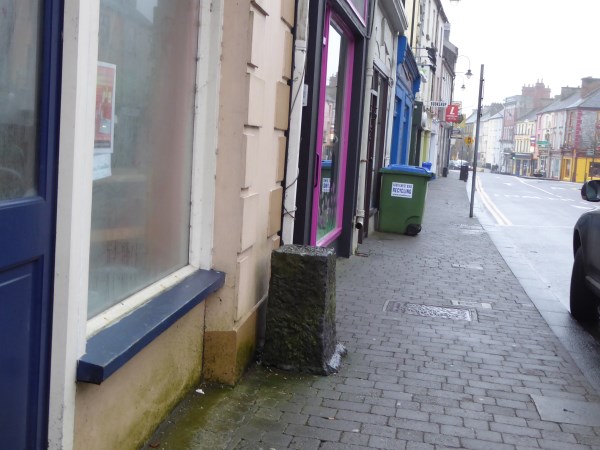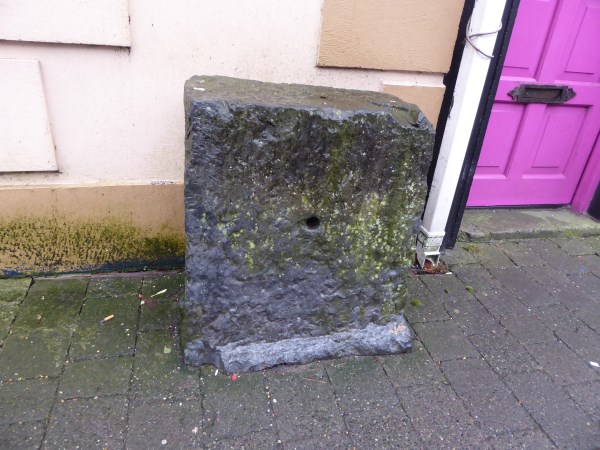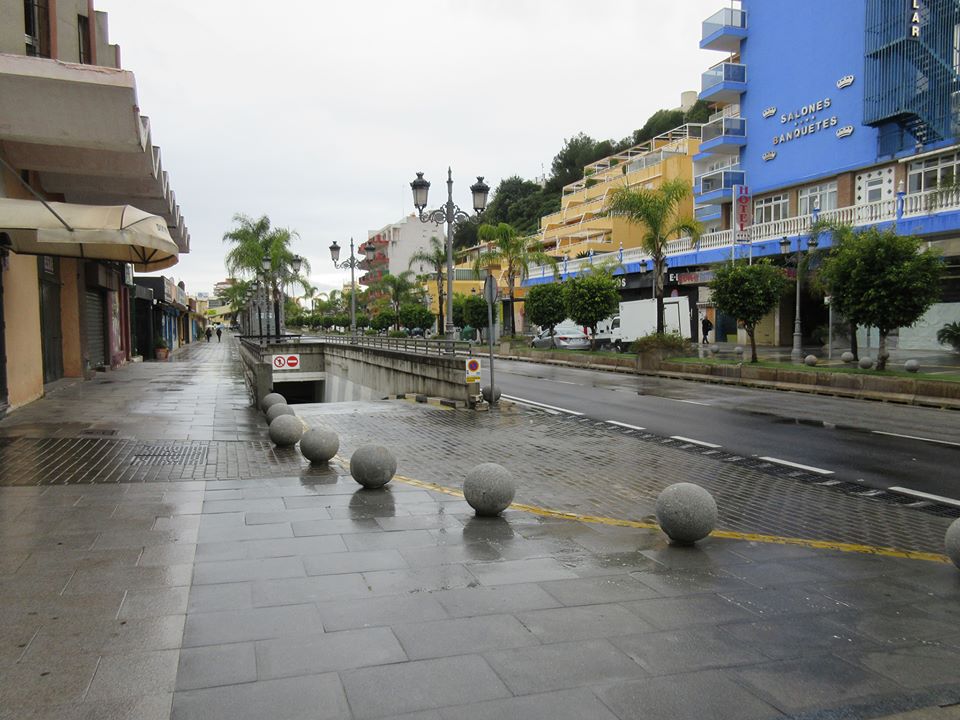
The very best way to work up an appetite for the Christmas dinner.. The Goal Mile on Christmas morning.

The Cogan family did the GOAL Mile in Cork in 2016
<<<<<<<
Remember
A poem by Donna Ashworth
If you haven’t sent cards this year, or forgotten someone’s gift.
If you don’t have matching pyjamas or a festive family photograph.
It’s okay.
If you can’t find the energy to be merry and bright,
or your tree isn’t even decorated yet.
That’s really just fine.
If you don’t feel like watching your favourite Christmas movies, or honouring the traditions that you normally always do.
Don’t sweat it, my friend.
This year has been hard, for many.
Really hard.
If you can’t see a way to celebrating like you have in the past, don’t worry.
Just hang on in there, finding any joy you can in any little way.
Just make it through till next year.
One day at a time.
We need you.
Hang on in there.
You are loved.
Donna Ashworth
Author of ‘wild hope’
<<<<<<<<<
Christmas in The Black Valley
by Dan Doyle

Photo and caption from MV Eanna on Facebook
Idir bhád agus rothar.
Seo grianghraf de Patsy Lydon (RIP) i mí na Nollag 1991 ag iompar a chrann Nollag ó Eannach Mheáin chuig a theach ar Inis Treabhair, in aice le Litir Mór.
This is a photo of Patsy Lydon (RIP) taking his Christmas tree from Annaghvaan to his home on Inis Treabhair Island near Lettermore in December 1991. Patsy was the last person to live on Inis Treabhair before his passing. God Rest his soul.
© Photo and information with thanks to Joe O’Shaughnessy.
This was one of the photographs from an exhibition of cyclists in Galway City and County from over the years on display in city centre shop front windows as part of Galway Bike Week which was some 12 years ago or so now.
Now Dan’s essay prompted by the photo…
The memories of Ireland come to us at Christmas more than at any other time of the year those of us who went away young. This man with his Christmas tree on his bike it kind of speaks to me. He is alone on the wet road probably going to his home where he might be alone also.
I have visited old men on the mountains of Kerry before I went away and as I walked up to the house I heard conversation and when I went in there was nobody there, just the old man talking to himself, as the wind moaned in the chimney. The night breeze in the hills made a ghostly sound sometimes as it gusted through the cliffs and the heather. As we can look back at the bleak road he has come with his tree, we wonder why is he even bothering if there is nobody at home to even say “Nice tree” or “God, it smells so fresh. Nothing like the smell of pine needles. Will you be having a drop of tea after you put it up ”
The photo in black and white takes me away back. We walked to midnight mass. It was usually frosty walking through the bog. At the cross roads more would fall in with us and walk to the town. Something special about midnight mass, something special about the Latin, something special about walking with our brothers. I knew I was counting the years we would be together. I knew I was going at an early age. I had to go because I knew somewhere there was warmth and a warm bed and maybe a girl to tell me ” I was waiting for you. Let me hold your hand as you already have my heart ” so I walked the roads like this man and he is me if I didnt go away,
Coming home from midnight mass we waited till we could see the big Christmas candle lit in the window. It seemed to flicker its welcome across the bog. On my last Christmas at home I asked Timmy to stand a moment by the little bridge coming home from Midnight mass. I wanted to soak it in one more time. I wanted to feel the magic of it forever. There was no electricity in our parts for a long time. It was a cold damp night and even after all the years I still feel how it was. So the man and his tree speaks to me. I will be saying a prayer for him tonight. He traveled that wet road to get the tree and I feel his loneliness. He might be heading for a little boat to row across to an Island, a place that further isolates him, so like the Druids of old maybe he will sit and talk to the tree, after he has a nice fire going.
I went at 18 and i took time to adjust. That first Christmas I was able to send a fist full of dollars home to mom so she could actually pay for everything the day she got her supplies, even a bottle of the cratur for the neighbors who were sure to come in. We had them in Kerry too living back in the hills just like the man with the bike, lonely men who walked in at night just to sit by the fire ,just to see other human beings, so mom could take down a few cups and spill a drop in and pass them around and look towards America ,
” This is from Danny , I hope he is looking at the same moon as we are tonight ”
I was far away but a girl was waiting for me. She was going to take my hand and never let it go again . This is for Lily, and Maureen and now I go to say a few prayers for the man on that wet road with his Christmas tree , 3 Hail Marys is all I’ll say. I have been saying them since midnight mass long long ago and the Blessed Mother has kept her eye on me. Sometimes I went astray but she frowned and pulled me back.
<<<<<<<<<<<
Some Listowel Windows

Danny’s Hairdresser’s and Wig Clinic




Doran’s Pharmacy, Upper Church Street
<<<<<<<<
Mass Times

<<<<<<<<<<
Tralee Christmas Remembered
by Michael O’Callaghan
Memories of Christmas Past and Present
I can remember my grandparents’ O Callaghan’s house and their Christmas preparations. There was a big emphasis on baking and having all the ingredients ready in their house long before Christmas to bake the cakes and plum puddings.
Around the end of September my grandma, clad in her wrap around shawl, and granddad would yoke up the pony and trap. Their destination was Madden’s shop in Tralee to buy the sack of white flour, currants, raisins, and whatever other ingredients were necessary for baking cakes and bread. At this time all bread and cakes were home baked in the range. Rural electrification had not fully hit the area.
After Maddens they headed for the tobacconist to buy the plug tobacco for my grandfather’s pipe. The final stop was Godley’s bar to buy the couple of bottles of whiskey. They then toddled away back home because the big bulk of the Christmas shopping was done and dusted.
The cakes and puddings had to be baked no later than” Halloween “so that they would have settled down and had absorbed all the flavours of fruit and drink by Christmas. They would have been given dosages of whiskey, porter, and rum to help their preservation.
My grandparent’s lives were simple and their big event was midnight Mass on Christmas Eve’. The Christmas goose was a big Xmas dinner item. There was little or no mention of Santa.
In my youth things had changed considerably. Christmas trees were becoming more popular. Putting up the crib was a big event and Santa Claus was big news in our house.
I do remember that if you wanted a bike or trike you had to order it months in advance, or it was no deal. Caballs shops in Tralee did a bumper trade. We had no Amazons or Smyths Toys, or Toy master. All the toys and bikes were bought in one of the three Caball’s shops in Tralee.
My father always insisted on sending Brian O Higgins Irish Christmas cards with the message as Gaeilge and each card had to have a religious and Celtic symbol. Many years later I am sending the same type of card.
I had a school mate, Father Stack, who was a member of the Kiltegan missionaries, and he came to the school where I worked each Christmas, and I bought their cards. That is many years ago, but I am reluctant to break the link even though he died some years ago. I still buy their cards.
At home in Tralee there was an annual list of family and friends in Ireland and abroad to whom cards had to be posted. This list was stored away by my father and withdrawn from a drawer in the first week of December. The cards were duly written with a letter enclosed in each one of them giving all the family news about births, marriages, and deaths. This exercise could go on for a week. Then they were all checked and posted together. I loved that ritual and still do exactly as he did.
Now the next great event was the shopping list. This was our online home delivery shopping. We had no supermarkets and were dependant on a few grocery shops. Our grocery shop of choice was Mikey Connors in Castle Street, Tralee. He was somehow related to my mother, but my father didn’t like his political affiliations. Anyway, Mikey’s was the shop of choice. He insisted that you had to have your Christmas shopping list in by the second week in December to ensure delivery for Christmas. Big Pat Sullivan was the van driver who delivered all the shopping. They were way ahead of today’s click and collect or home deliveries and online shopping. He arrived and put all the shopping on the table and then sat down and had a cuppa. Living was easy going enough and of course he got his Christmas gift. We also got our loyalty bonus in the form of a Christmas cake and a bottle of Sandeman port whether you liked it or not. So, the shopping was always delivered in good time for Christmas.
The Christmas post was another great event. We had relations in England and America and the cards and letters were eagerly awaited and read by all. They were the annual family census reporting births, marriages, and deaths in the greater family for the year.
There was fun too in the delivery of these letters. We had the same postman for many years. He was a great character, but his Christmas round was more arduous than necessary because he was a bit fond of the crature. Our house was the last on the line and all he wanted to do was sit down and rest which he often did. My father offered him a tipple which he duly scoffed off. Then he might shake out the bag on the table to make sure everything was delivered. I often ran around to deliver a few cards. No one minded because it was pre GDPR and was in the spirit of Christmas.
Then we had the Christmas turkey. My father always got a big bronze turkey from a friend, but it had to be cleaned and plucked. We had a local turkey plucker named Tandy Savage. Tandy was quite fond of the cratur as well and was always very busy around Christmas plucking turkeys. He had his clients and went from house to house plucking his trade. Tandy would take a break to have his half whiskey and bottle of porter. He would be nicely when he arrived at our house, and he told yarns or played the spoons. It was an annual Tandy show.
He moved on when he got his dosh for his endeavours. He was truly one of the great characters along with his neighbour and friend Ned Kelleher, who had a pony and trap to bring tourists around Tralee and Blennerville.
I must say I enjoyed the Christmas period. This started with the youngest member of the family lighting the big red Christmas candles in the windows on Christmas eve.
I was sad in a nice way when we bought our first electric candle in Quilters in Tralee. My father had cut a log early in the summer, left in the shed to dry, varnished it, bored a hole in the base and top and wired it up. We were very proud when we switched it on.
Then there was the magic of going to bed early on Christmas Eve full of expectation and joy hoping that Santa Claus was coming down the chimney with our presents that we asked him for.
I remember the joy on Christmas morning when we opened our presents. There was happiness unbounded that Santa had come and that in addition to our requested toys we always got a surprise.
Then there was the `Christmas dinner with the turkey and Brussel sprouts from the garden with carrot and parsnip mash with peas and roasties, all liberally smothered with rich turkey-based gravy. My mother’s turkey gravy was so yummy.
Television had not come to Kerry in my youth, so we had more simple pursuits like a walk along the nearby canal banks or back to the strand to skim stones along the water if the weather permitted.
When we came home my father always insisted on reading Christmas stories and poems which sounded great to me.
They were simple Christmas times when we played with our new Christmas games. We also played cards, draughts, ludo, made jigsaws, collected stamps with not a trace of a television in sight.
They were in their own simple way very exciting times for us. We had super fun at Christmas time with just family and neighbours around us on Christmas Day.
The Christmas holiday period was always an important time for family visitation. We paid courtesy calls to the grannies and other relations around, but one visit was always special. We visited my uncle Daniel and his wife Julie, and they reciprocated. They had a passion for playing cards and their house was a base for Blennerville card games for the Christmas turkeys. That was serious stuff.
They came to our house for supper on St Stephens night. Once supper was over there was a visible restlessness until we started the card game of 31, playing in pairs. I knew very little about cards and there were often a few raised voices when I struck down my partner. This was my annual experience in the delicate art of card playing.
The Christmas season extended on till Nollaig na mBan on the sixth of January which was always celebrated in Kerry as Little Christmas or Women’s Christmas. The menfolk had to do all the work and cooking on that day. It is still a festival party event which is celebrated in sell out events in hotels in Kerry.
Christmas is far more commercialised now with the Christmas lights, alcoholic drinks, chocolates, and biscuits shamelessly appearing in supermarket shelves in the month of August.
Christmas decorations and all the other paraphernalia associated with the festive season now appear before Halloween masks, nuts and fruits disappear off the shelves. This is a ludicrous situation and a definite source of confusion for children and adults alike.
We still embrace Christmas here at home as a nice family time to give presents and to share some time together, while still trying to keep some perspective on what the season is all about and how we celebrate it.
Our satnavs have steered us a long way from Bethlehem. We are now following a very commercially driven star.
<<<<<<<<<<<
A Kerry Christmas Card

Artist unknown
<<<<<<<<<<<
A Sad Sean MacCarthy Poem

<<<<<<<<
Time to say Good Bye
It’s Slán libh from me for 2023.
If God spares us all we’ll meet here again in 2024. ‘Til then I wish you all a happy and peaceful Christmas.Thank you for all the positive feedback and support during the year. M.C.
<<<<<<<<<



































